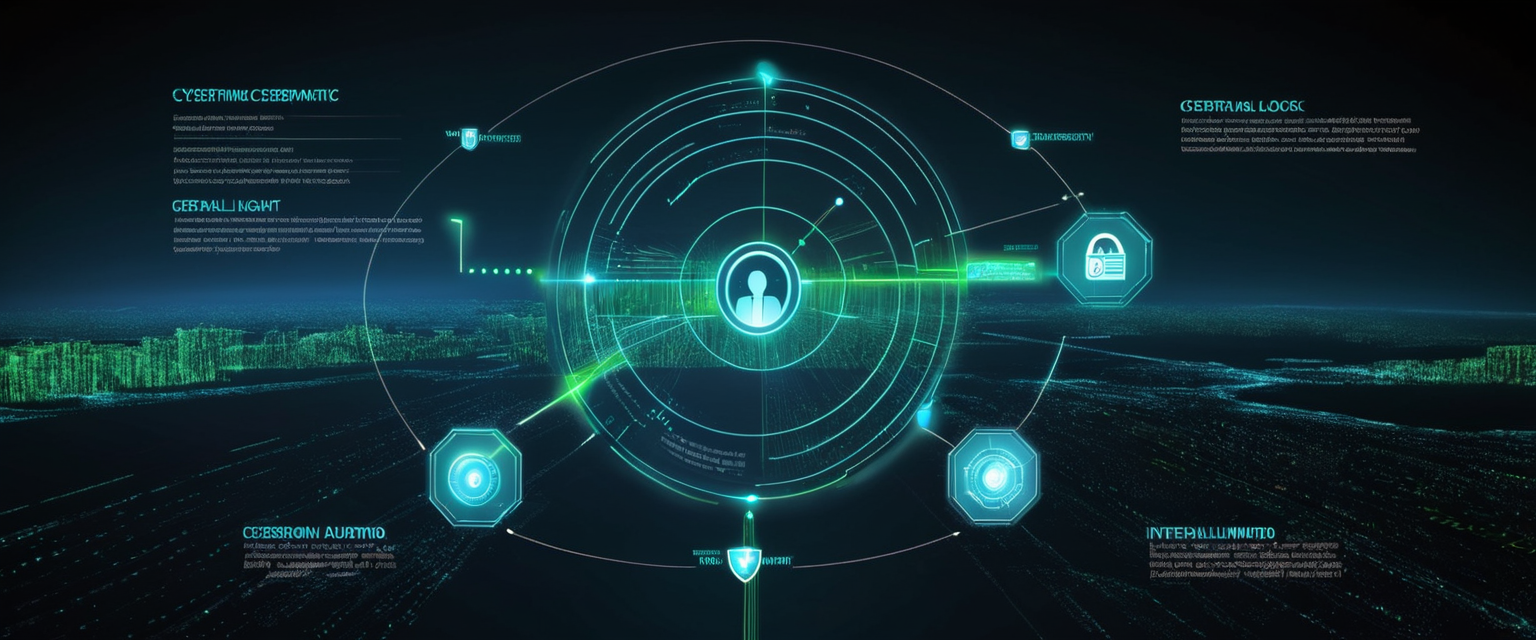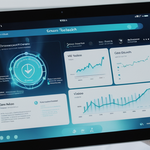
Auditing access logs has become one of the most critical yet overwhelming challenges facing modern cybersecurity teams. Organizations generate exponential volumes of authentication and credential-related data daily, creating a paradox where more visibility can paradoxically lead to less actionable intelligence. This comprehensive report examines how security professionals can implement structured, efficient approaches to audit encrypted login credentials, manage password authentication systems, and monitor access patterns without succumbing to alert fatigue. By integrating standardized logging practices, intelligent filtering mechanisms, behavioral baselines, and automated analysis workflows, organizations can transform raw log data into strategic security insights while maintaining compliance with regulatory frameworks such as SOC 2, HIPAA, PCI DSS, and GDPR. The fundamental challenge lies not in collecting more data but in creating systematic approaches that prioritize security relevance over exhaustive collection, enabling security teams to detect genuine threats while minimizing noise and maintaining operational efficiency.
The Overwhelming Landscape of Access Logs: Understanding the Challenge
The proliferation of authentication systems and credential management mechanisms has fundamentally transformed how organizations must approach security monitoring. Modern enterprises operate with multiple authentication flows including traditional password-based systems, OAuth implementations, SAML configurations, multi-factor authentication mechanisms, and single sign-on infrastructure across diverse platforms. When employees access applications from multiple devices in various geographic locations, and when organizations maintain integration with third-party services like Google Workspace, Okta, and Auth0, the resulting authentication event stream becomes extraordinarily complex. Each login attempt, credential validation check, and access grant decision generates log entries that organizations are expected to retain, analyze, and make available for compliance audits and incident investigations.
The sheer volume of this data creates what cybersecurity professionals term “alert fatigue,” a phenomenon where security operations centers receive thousands of alerts daily yet struggle to investigate more than a fraction of them. Recent research indicates that organizations receive a median of approximately 960 alerts per day, yet roughly 40 percent of these alerts are never investigated. This disconnect between the volume of alerts generated and the human capacity to respond to them represents a fundamental constraint in modern security operations. The issue is compounded by the fact that traditional rule-based systems generate numerous false positives, creating “noise” that obscures genuine security threats. When analysts are overwhelmed by low-value alerts, they become desensitized to security signals, increasing the risk that critical incidents will be missed or delayed in detection.
The complexity of auditing access logs intensifies when organizations must consider regulatory requirements and compliance mandates. Different regulatory frameworks impose distinct requirements for log retention periods, audit trail depth, and evidence preservation. HIPAA requires healthcare institutions to maintain logs for at least six years, while PCI DSS demands at least one year of retention with three months immediately available. GDPR, by contrast, does not specify concrete retention periods but requires organizations to balance security and compliance needs with data minimization principles. SOX requirements for financial institutions demand seven years of audit log retention. Organizations operating across multiple jurisdictions often must maintain different log retention strategies for different data categories and geographic regions, creating operational complexity that multiplies the challenge of log management.
The password manager ecosystem adds another layer of complexity to audit logging requirements. While password managers have been widely recommended to users for generating and storing unique, secure credentials across multiple websites, these tools themselves generate substantial audit trails that must be monitored. Enterprise password managers track user activity including password creation, sharing, editing, deletion, and failed access attempts. This creates additional log data that organizations must collect, analyze, and retain. Password manager audit logs act as a security camera for credential vaults, recording every activity with timestamps, user identification, device information, and geographic location details. However, research has demonstrated that many password managers fail to report breached credentials accurately, with weak passwords also being under-reported by these systems. This inconsistency in password health reporting creates audit gaps where compromised credentials may not be identified and remediated promptly.
Foundational Architecture: Standardizing Authentication Logs and Structuring Access Monitoring
Addressing the challenge of overwhelming access logs begins with establishing a standardized foundation for log collection and formatting. Organizations cannot effectively analyze logs if those logs come from disparate sources in inconsistent formats with varying levels of detail. The standardization effort must address multiple dimensions: the structure of individual log entries, the consistent inclusion of critical metadata, the parseable formatting that enables automated analysis, and the centralized aggregation that allows correlation across systems.
When standardizing authentication logs, organizations should prioritize collecting essential attributes that enable threat detection and compliance verification. The user identifier, captured as a username or email address rather than an internal database identifier, enables tracking of which specific users are failing to authenticate, critical information for detecting brute force attacks or credential compromise. The event category field should explicitly identify entries as authentication events, making it possible to rapidly filter authentication data from other log types. The event name field should provide detailed information about the authentication source and method, distinguishing between SAML authentication, OAuth flows, password-based authentication, and other mechanisms. The event outcome field, set to either success or failure, enables analysts to quickly identify patterns in login failures that might indicate attacks in progress. The network client IP address provides insight into the geographic and network origins of authentication requests, enabling detection of impossible travel scenarios and geographically anomalous access attempts.
Beyond these core attributes, comprehensive authentication logging should include supplementary metadata that enriches investigation and compliance capabilities. Timestamp fields must employ consistent time zone handling, typically UTC normalization, ensuring that events can be accurately sequenced across distributed systems. Device identifiers, including device fingerprints and type information, enable organizations to identify whether users are accessing systems from expected devices or from unfamiliar endpoints that might indicate credential compromise. Session duration tracking reveals unusual patterns in session length that might indicate automated attacks or data exfiltration activities. Geographic location information from geolocation services or IP-based derivation enables detection of impossible travel scenarios, where a user appears to log in from two distant locations within an implausibly brief time period.
The structured format of logs profoundly impacts downstream analysis capabilities. When logs conform to standardized structures such as JSON or key-value pair formats, automated parsing becomes feasible and search queries become more efficient. Organizations should implement log normalization at the point of collection or during early processing stages, converting logs from diverse source systems into a common schema. This normalization approach includes standardizing field names, ensuring consistent timestamp formats, mapping severity levels to a common scale, and assigning consistent tags or classifications to log entries based on their type and source. Organizations adopting standardized log structures report significantly improved ability to search for specific entries, filter logs by relevant criteria, and correlate events across different systems. These capabilities translate directly to faster root cause analysis, reduced mean time to detect security incidents, and improved overall system reliability.
Centralized logging infrastructure serves as the backbone for effective access log auditing. Rather than maintaining logs dispersed across individual systems and applications, organizations should aggregate logs from all authentication sources into a centralized repository where they can be searched, analyzed, and monitored uniformly. This centralized approach enables comprehensive analysis that would be impossible with distributed logs, as security investigations often require understanding patterns that span multiple systems and time periods. The selection of aggregation architecture—whether agent-based, agentless, or hybrid—depends on organizational infrastructure characteristics. Agent-based collection places software on systems generating logs, offering advantages including local filtering, encryption, and buffering during network outages. Agentless collection pulls logs from central repositories or APIs without requiring local agents, simplifying maintenance at the potential cost of increased network traffic. Most sophisticated organizations implement hybrid approaches, using agents for critical systems and agentless collection where agent deployment introduces excessive overhead.
The architecture should implement log retention strategies that balance compliance requirements with practical storage and analysis constraints. Organizations cannot reasonably maintain fine-grained analysis on years of historical data; instead, they should implement tiered retention where recent logs (typically three months) remain in fast-access storage systems optimized for rapid search and analysis, while older logs are archived in less expensive long-term storage systems that can be accessed for compliance audits or incident investigations but are not maintained in active analysis systems. This tiered approach dramatically reduces costs while maintaining necessary compliance capabilities, as most security investigations focus on recent events while historical access is primarily needed for compliance verification and occasional forensic analysis.
Authentication Log Monitoring and Threat Detection Through Access Patterns
With standardized, centralized logging infrastructure established, organizations can implement sophisticated threat detection capabilities that identify security threats through analysis of authentication patterns and access behaviors. Authentication logs represent particularly valuable security telemetry because they capture the results of access control decisions and authentication validation processes, providing direct visibility into attempts to gain unauthorized access to systems and data.
The fundamental principle of authentication log analysis is identifying deviation from expected patterns. Common authentication attacks manifest as distinctive patterns visible in access logs. Brute force attacks appear as numerous failed login attempts from a single source concentrated over short time periods, potentially followed by successful authentication if the attacker guesses the correct credential. Credential stuffing attacks involve attackers testing breached credentials against accounts, appearing as multiple failed login attempts using different user identifiers from the same source IP address. Account takeover attempts, where attackers have obtained valid credentials and are attempting to access the compromised account, may initially appear as successful authentications from unusual geographic locations or devices, followed by abnormal usage patterns diverging from the legitimate user’s typical behavior.
Sophisticated threat detection requires context-aware analysis that incorporates information about user roles, system criticality, and environmental baseline patterns. A login attempt from an unusual geographic location might be entirely benign for a remote workforce employee who travels frequently but would be highly suspicious for a system administrator who typically accesses systems from a corporate data center. Similarly, access to a critical database system during non-business hours might represent a genuine security incident for most users but could represent normal behavior for an on-call database administrator. Organizations must implement detection systems that incorporate this contextual information to distinguish genuine threats from benign anomalies.
The challenge of implementing this contextual threat detection capability is surmountable through integration of user and entity behavior analytics with authentication logging infrastructure. Rather than applying static rules that alert on any login outside standard business hours or geographic parameters, organizations can establish behavioral baselines that capture what constitutes “normal” behavior for each user and system. These behavioral baselines incorporate login time patterns, geographic locations from which users typically authenticate, device types used, authentication methods employed, and resource access patterns. The baseline establishment process typically requires two to four weeks of data collection to capture natural variation in user behavior including different shifts, remote work patterns, travel, and seasonal variations. Once established, these baselines serve as reference points for anomaly detection systems that employ machine learning algorithms to identify subtle deviations from normal patterns that might indicate account compromise or insider threats.
Machine learning approaches to authentication anomaly detection fall into several categories, each with distinct advantages for particular threat scenarios. Supervised learning approaches train on labeled datasets where anomalies have been previously identified, enabling the system to recognize patterns associated with known threat types. Unsupervised learning approaches excel at identifying previously unknown attack patterns by finding clusters of similar behaviors and identifying outliers that don’t fit established patterns. Semi-supervised learning combines elements of both approaches, balancing the strengths of both paradigms. Deep learning approaches using neural networks excel at processing complex, high-dimensional data and identifying subtle patterns in user behavior that might escape traditional analysis methods.
The practical implementation of authentication monitoring should incorporate real-time alerting mechanisms that notify security teams when suspicious patterns are detected, enabling rapid investigation and response. Security information and event management (SIEM) systems integrate authentication logs with data from other security tools, enabling correlation of authentication anomalies with other indicators of compromise. For example, a SIEM might correlate unusual login attempts with subsequent privilege escalation attempts, data access anomalies, or network activity deviations, enabling security teams to understand the full scope of potential compromise rather than viewing authentication anomalies in isolation. SIEM Detection Rules that scan ingested logs in real time for common attacker techniques can generate Security Signals that aggregate related events into consolidated alerts, reducing the noise analysts must process while improving the signal-to-noise ratio of their monitoring infrastructure.

Implementing Efficient Audit Workflows: From Collection to Analysis to Action
Moving from standardized infrastructure and threat detection to operationally efficient audit workflows requires implementing systematic approaches to alert triage, investigation, and response. Alert triage represents the systematic evaluation, prioritization, and response to security alerts emerging from access log analysis. In Security Operations Centers where alert volumes exceed analytical capacity, effective triage ensures that limited analyst resources are directed toward genuine threats while lower-risk items are either automatically resolved or deferred.
The alert triage process comprises several stages that transform raw alerts into prioritized actions. The initial collection phase aggregates alerts from diverse sources into a unified platform for comprehensive analysis. The categorization phase sorts alerts into different categories based on threat type, affected assets, or attack stage, enabling analysts to understand the nature of threats at a glance. The prioritization phase ranks alerts according to severity, impact, and contextual factors, ensuring that critical threats receive immediate attention while lower-priority items can be scheduled for later investigation. The analysis phase involves deeper investigation to determine whether alerts represent genuine threats or false positives. The incident response phase executes predefined response actions if alerts are confirmed as genuine threats. The continuous improvement phase incorporates learnings into refined detection rules and processes to improve future alert quality.
A critical element of efficient alert triage is implementing automated workflows that handle high-volume, low-risk alert categories without requiring analyst intervention. Alert fatigue reduction strategies focus on retiring stale rules that no longer apply to the current environment, consolidating duplicate detections that arise from multiple sources reporting the same underlying event, normalizing severity assignments to ensure consistency across alert types, and right-sizing detection thresholds to reduce false positive rates. Some organizations implement suppression and deduplication mechanisms with time-window correlation that automatically consolidates related events into single alerts, significantly reducing the number of discrete alerts analysts must process. Detection hygiene practices that audit detection rules on a regular basis, typically every six months, help catch drift where rules may no longer accurately reflect the intended threat patterns.
The implementation of detection rules should incorporate asset criticality and risk scoring methodologies that automatically prioritize alerts affecting critical systems or high-risk users. Rather than treating all login failures equally, organizations should implement risk scoring that considers whether a failed login involved a critical system (such as a database server or administrative system) versus a standard business application. Similarly, risk scoring should consider the user role and access level of the account involved in the alert, giving higher priority to suspicious behavior from privileged administrator accounts or service accounts that control critical infrastructure. This context-aware prioritization ensures that analyst effort is directed toward threats with the highest potential business impact.
User and entity behavior analytics (UEBA) systems complement traditional authentication log analysis by incorporating broader behavioral context that enables more accurate anomaly detection. UEBA systems analyze login patterns, access patterns, command execution, file access behaviors, and network activity to identify deviations from established baselines. The advantage of UEBA for authentication audit is that it can identify accounts that are compromised even when attackers are using valid credentials, because the behavioral patterns of system access will differ from the legitimate user’s normal patterns. For example, a legitimate employee whose credentials have been stolen will show access patterns that differ markedly from their normal behavior: access from unusual devices, at unusual times, from unusual locations, with access to systems they normally don’t access and unusual data movement patterns.
Organizations should establish clear investigation procedures that guide analysts through the process of determining whether alerts represent genuine threats or false positives. Checklists should direct analysts to examine relevant logs, check for related alerts that provide context, verify whether the suspicious behavior aligns with user roles and responsibilities, and confirm whether the activity corresponds to any known legitimate business processes such as scheduled maintenance or data migrations. Organizations should maintain documentation of investigation outcomes, tracking which detection rules consistently generate false positives that should be tuned or disabled, which investigation patterns emerge repeatedly, and what response actions were effective in containing and remediating incidents.
The incident response component of alert triage must be executed swiftly to minimize the potential damage from genuine threats. For authentication anomalies that suggest compromised credentials, incident response procedures should include immediate account disable actions to prevent attackers from using compromised credentials for further access, forced password resets for affected users, review of account activity logs to identify what data or systems the attacker accessed, and notification procedures for affected users and relevant stakeholders. Organizations should establish playbooks for common incident response scenarios, such as business email account takeover, so response procedures can be executed rapidly without requiring individual decision-making for each incident.
Advanced Approaches: Artificial Intelligence and Behavioral Baselines for Scalable Auditing
As organizations continue to generate exponentially larger volumes of log data and face increasing complexity in threat detection, artificial intelligence and machine learning approaches have emerged as essential tools for scaling audit capabilities beyond what manual analysis can achieve. AI-driven log analysis fundamentally changes how security teams approach the challenge of volume by automating the heavy lifting of data processing while preserving human expertise for high-value decision-making and investigation.
Machine learning approaches to authentication log analysis deliver advantages that extend beyond simple rule-based detection. AI systems can automatically cluster and categorize incoming logs, making critical information instantly accessible without manual parsing. Rather than applying static thresholds that cannot adapt to changing environments, AI learns and adjusts in real time, recognizing shifting network behaviors so anomalies are detected as they emerge even when usage patterns evolve. AI-powered anomaly detection reduces false positive rates, allowing security teams to be alerted only when something worth their attention is occurring, clearing the clutter and skipping noise that traditional rule-based systems would generate.
The foundation of AI-driven authentication anomaly detection is the establishment of accurate behavioral baselines that capture what constitutes normal behavior for each user, system, and organizational context. This baseline establishment process is not a one-time configuration but rather an ongoing learning process where the system continuously observes patterns in authentication behavior, identifies correlations and recurring sequences, and develops statistical models representing normal behavior for each entity. For users, baselines capture login times and geographic locations, typical resource access patterns, frequency of authentication method changes, and patterns in multi-factor authentication challenges. For systems, baselines capture typical authentication request volumes, expected geographic origins of access attempts, normal timing of administrative access, and expected service account authentication patterns.
The baseline establishment phase typically requires two to four weeks of observation without performing anomaly detection, as the system needs to capture natural variation in behavior. During this period, humans may travel, work different shifts, or access systems from temporary locations, creating patterns that should be incorporated into the baseline as normal rather than flagged as anomalies. Once baselines are established, machine learning algorithms can identify deviations from these patterns, triggering alerts for investigation. The critical advantage of this approach is that behavioral baselines are unique to each user and system rather than based on organization-wide static thresholds, dramatically improving accuracy and reducing false positives.
AI-driven log analysis demonstrates measurable impact on security outcomes. Organizations implementing AI-driven security detection reduced the average time to identify breaches by 74 days compared to organizations using traditional detection approaches. Gartner research indicates that organizations implementing AI-driven identity monitoring can reduce false positive security alerts by up to 80 percent, allowing security teams to focus on genuine threats rather than benign anomalies. In practical terms, if an organization receives 960 alerts daily with 40 percent never investigated, an 80 percent reduction in false positives means the number of alerts requiring investigation drops from 576 to roughly 115, a dramatic improvement in what human analysts can realistically investigate and resolve.
Beyond individual alert analysis, AI systems can perform sophisticated correlation of authentication events across systems to identify attack patterns that would be invisible when examining individual log entries. Time-based correlation links events occurring within specific timeframes or sequences, enabling detection of attack chains like a failed login followed by successful login from an unusual IP address within minutes. Pattern-based correlation identifies recurring sequences in event data that signify known issues, analyzing historical logs to flag patterns such as repeated failed database connection attempts followed by specific error codes indicating configuration problems. Topological correlation connects events based on system relationships and dependencies, recognizing that a network switch failure may trigger related alerts across connected devices. Heuristic correlation uses experiential knowledge and approximations to identify links, recognizing that repeated error codes often indicate systemic configuration issues rather than isolated incidents.
The practical implementation of AI-driven authentication auditing should incorporate transparency in how systems reach conclusions and recommendations. Rather than presenting analysts with only the final alert, advanced SIEM systems provide reasoning and evidence trails that explain the factors considered in reaching conclusions. For example, rather than simply stating “suspicious login detected,” a transparent system explains that the alert was triggered because the user logged in from a new geographic location (Irving, Texas versus normal Denver, Colorado), from a new device type (Windows laptop versus normal Apple Mac), outside normal activity hours (10 PM UTC versus typical 2 PM to 8 PM UTC window), and from an IP address with a known fraud score. This transparent reasoning enables analysts to quickly understand whether they should investigate further or close the alert as a false positive due to legitimate circumstances (employee traveling for company event) that the baseline establishment period did not capture.
Compliance, Retention, and Audit Readiness Through Strategic Log Management
The ultimate purpose of auditing access logs extends beyond real-time threat detection to encompassing compliance verification and audit evidence preservation. Organizations must maintain logs that demonstrate compliance with applicable regulatory frameworks, prove that access controls are functioning effectively, and provide evidence for forensic investigations when security incidents occur. This compliance dimension of log management requires distinct strategies from real-time monitoring approaches.
Regulatory compliance frameworks impose varying requirements for authentication and access log retention. SOC 2 compliance, relevant for service organizations handling customer data, requires comprehensive audit trails of all login and access events with sufficient detail to identify suspicious or malicious accounts and held for sufficient time to allow delayed forensic analysis. HIPAA compliance requirements for healthcare organizations mandate retention of authentication logs for at least six years. PCI DSS compliance for organizations handling payment card data requires retention of at least 12 months of history with three months immediately available, representing a balance between compliance evidence preservation and practical storage costs. Organizations operating internationally must often maintain different retention periods for different data categories and geographic regions, as GDPR requirements differ from HIPAA or PCI DSS in philosophy and specific timelines.
The development of comprehensive log retention policies provides the governance framework necessary to ensure compliance across diverse data sources and regulatory requirements. A well-crafted log retention policy should address the scope and coverage of logs included in the policy, identifying which systems, applications, and environments fall under policy purview and specifying justified exclusions. The policy should document retention timelines and the rationale for specific retention periods, mapping retention requirements to specific regulatory mandates and internal security requirements. Clear definition of roles and responsibilities prevents accountability gaps by identifying who maintains the policy, which teams configure retention settings, how compliance is verified, who authorizes exceptions, and who oversees third-party services. Documentation of storage, protection, and access procedures should address the entire lifecycle of log data from collection methods to transmission security, storage location, access controls, encryption requirements, integrity verification, and secure deletion procedures.
Organizations should implement controls to maintain log integrity such as write-once storage mechanisms, cryptographic hashing of log entries to enable detection of tampering, and access monitoring to preserve chain of custody. These integrity controls are particularly critical for logs used in forensic investigations or regulatory compliance evidence, as logs that could have been modified after creation have reduced evidentiary value. Some organizations implement append-only database tables or similar mechanisms that prevent deletion or modification of historical log entries. Others employ cryptographic signing of log entries to enable detection if logs are later altered.
The process of continuous review prevents the “set it and forget it” trap that leads organizations to discover compliance gaps during audits when remediation becomes urgent and expensive. Organizations should establish explicit review requirements including scheduled assessments of log collection completeness, periodic testing of log search and recovery procedures, capacity planning to ensure storage systems can maintain required retention periods, regulatory tracking to identify new or modified compliance requirements, and evaluation of tools and processes to identify improvements. During these review periods, organizations should verify that collection is actually occurring for all required data sources, that logs are being retained for the full required period, that access controls are preventing unauthorized access to logs, and that log integrity controls are functioning as designed.
The challenge of manual log review and evidence collection represents one of the largest pain points for compliance teams. While organizations are generating and retaining massive volumes of logs, extracting evidence that demonstrates specific compliance requirements are being met often requires manual searches and compilation of results. Modern compliance platforms can streamline this evidence collection process through automated workflows that request and track collection of log samples, send reminders when log retention evidence is due, and link log retention evidence directly to the relevant controls and requirements. This automation reduces the time and effort required for audit preparation while improving consistency and reducing the risk of incomplete evidence presentation.

Integration of Password Management and Credential Auditing with Access Log Analysis
For organizations implementing password managers and centralized credential management systems, audit requirements extend beyond traditional authentication logs to encompassing audit trails within the password management infrastructure itself. Enterprise password managers maintain detailed audit logs recording every activity with time, user, and context information, creating comprehensive visibility into credential vault usage. These audit logs act as security cameras for digital credential storage, recording password creation, sharing, editing, deletion, and failed access attempts.
The challenge of auditing password manager usage relates to both the volume of audit data generated and the necessity of identifying meaningful patterns within this data. Password managers in active use in large organizations can generate hundreds of thousands of access events daily as users retrieve credentials for daily work activities. Organizations must implement filtering and analysis strategies that distinguish between normal credential access and suspicious patterns suggesting compromise or insider threats. The audit logs should capture essential information enabling threat detection including login events with timestamp, user identity, device information, and geographic location; password access with who accessed what password and when; password modifications with details of what changed and who authorized the change; sharing events documenting which credentials were shared with which users and for how long; and deletion events recording which passwords were deleted and by whom.
Organizations implementing password managers should establish audit procedures aligned with their broader access log audit strategy. Regular password audits conducted on quarterly or semi-annual basis can ensure passwords remain secure and that access levels remain appropriate to user roles and responsibilities. These audits should incorporate access control assessment verifying whether users have appropriate access levels based on their roles, applying the principle of least privilege to minimize unnecessary permissions. Audit logging and reporting components should maintain detailed logs of password-related activities for future reference and to assist in investigations if incidents occur. Generate reports demonstrating compliance with regulatory requirements and internal security policies.
Credential exposure monitoring represents an increasingly important component of password audit procedures, as organizations must detect when their own credentials or passwords stored in password managers have been compromised and exposed in public breach databases. Continuous monitoring systems can track credentials against known breach databases, enabling organizations to identify compromised passwords before attackers can exploit them. This monitoring is particularly important given research demonstrating that password managers themselves sometimes fail to report breached credentials accurately, with systematic analysis finding that many password managers under-report compromised passwords while also under-reporting weak passwords requiring change. Organizations should implement independent monitoring to verify that password manager security notifications are accurate and comprehensive.
The audit trail data from password managers becomes particularly valuable during incident investigations where organizations need to understand who had access to specific credentials and when that access occurred. For example, if an administrator with privileged access leaves the organization, an organization should be able to use password manager audit logs to quickly identify all passwords that administrator had access to, enabling rapid credential rotation to prevent former employees from retaining access to sensitive systems. Similarly, if a password manager account is compromised, detailed audit logs enable organizations to identify which credentials were exposed, triggering notification and remediation for those specific systems rather than requiring wholesale credential rotation across the entire organization.
Reducing Alert Fatigue Through Intelligent Filtering and Data-Driven Tuning
The ultimate challenge facing organizations implementing sophisticated access log monitoring is managing alert fatigue—the steady erosion of analyst attention caused by high volumes of noisy or low-value alerts. While implementing standardized logging, centralized aggregation, AI-driven analysis, and behavioral baselines creates the technical infrastructure for effective monitoring, realizing the benefits of this infrastructure requires managing alert quality and analyst workload.
Organizations should approach alert fatigue reduction as a cross-discipline effort requiring clean detections, reliable data, crisp workflow, strong feedback loops, and metrics that guide decisions. Before implementing major changes to detection systems, organizations should capture baseline data through a one-week snapshot that tracks metrics including alert count, alert sources, alert categories, false positive rates, mean investigation time, and whether alerts were investigated or ignored. This baseline establishes a reference point for measuring the impact of tuning efforts. Organizations should create ground truth by sampling alerts across sources and manually labeling them as true positive (genuine threat that required investigation), false positive (alert triggered but no actual threat), benign true (expected activity), or duplicate (same underlying event reported by multiple sources). Understanding the composition of alerts helps identify which areas require the most tuning effort.
The prioritization of detection tuning efforts should focus on high-volume alerts with low efficacy. Organizations can prioritize detections by plotting efficacy versus total time investigated, sizing points by alert volume to identify high-impact false positive tuning targets. Before disabling any detection rule, organizations should ask whether there has ever been a true positive, whether a simple logic change could remove most volume, and whether the detection uniquely catches the threat. This ensures that tuning efforts don’t inadvertently disable detections that catch important threats while occasionally generating false positives.
Risk scoring and enrichment should improve triage by pulling context that changes decisions, such as asset criticality, identity risk, external exposure, exploitability, and recent change events. A transparent model that combines base severity with those factors and normalizes to a 0-100 scale enables policy-based routing with guardrailed auto-closure for low-risk patterns and an audit trail. For example, a failed login attempt receives a base severity score, but the actual triage priority increases if the failed login involved a critical system, a high-risk user, or an IP address with known malicious history. This context-aware prioritization means that analyst effort is directed toward the highest-risk alerts rather than being distributed evenly across all alerts.
Automation and AI help with alert fatigue by fetching enrichment data, correlating related alerts, tagging duplicates, and safely closing known low-risk patterns with auditability. AI can summarize evidence, propose testable hypotheses, and pivot across tools with transparent reasoning, enabling analysts to make decisions more rapidly. Research indicates that 55 percent of companies currently use AI for alert triage and investigation, with leaders expecting AI to handle about 60 percent of SOC workloads within three years. The progression from rule-based automation to AI-driven analysis represents a fundamental shift in how organizations can manage alert volumes while maintaining detection accuracy.
Organizations should measure the impact of alert fatigue fixes and show return on investment by tracking changes in dwell time (time from detection to response), false positive rate (percentage of alerts that are not genuine threats), investigation throughput (alerts investigated per analyst per day), backlog size (number of uninvestigated alerts), and auto-closure share (percentage of alerts automatically resolved without analyst intervention). For example, with a median of about 960 alerts per day and roughly 40 percent never investigated, improving efficacy through reduced false positives and intelligent automation means that significant hours of analyst time are returned to the team and more complete coverage of actual threats is achieved.
Beyond Overwhelm: Auditing with Confidence
Auditing access logs and encrypted login credential systems represents one of the most important yet challenging cybersecurity responsibilities facing modern organizations. The exponential growth in authentication events, the proliferation of password management systems, the complexity of distributed authentication infrastructure, and the regulatory demands for comprehensive audit trails have created an environment where organizations generate more security data than they can realistically analyze using traditional approaches.
However, this overwhelming data volume does not represent an insurmountable problem but rather a challenge requiring systematic, strategic approaches to log management and analysis. Organizations that successfully navigate this challenge begin by establishing foundational infrastructure including standardized log formatting that enables automated analysis, centralized aggregation that enables correlation across systems, and documented retention policies that satisfy regulatory requirements while managing storage costs. These foundational elements transform raw log data from disconnected fragments into cohesive intelligence assets.
With foundational infrastructure in place, organizations can implement sophisticated threat detection capabilities incorporating authentication pattern analysis, behavioral baselines that adapt to each user’s unique context, and machine learning approaches that identify novel attack patterns without requiring humans to enumerate every possible threat scenario. These advanced detection approaches dramatically improve the signal-to-noise ratio of security monitoring, enabling limited analyst resources to focus on genuine threats rather than being overwhelmed by false positives.
The operational implementation of this vision requires systematic alert triage workflows that distinguish between critical threats requiring immediate investigation and lower-risk alerts that can be automatically resolved or scheduled for later review. Risk-scoring methodologies that incorporate context about asset criticality and user roles ensure that analyst effort is directed toward threats with the highest business impact. Compliance frameworks that document audit procedures, retention policies, and evidence preservation enable organizations to demonstrate to regulators and auditors that their authentication security controls are functioning effectively and that necessary audit trails are being maintained.
Ultimately, the goal of auditing access logs is not simply to collect more data or generate more alerts but to transform raw authentication telemetry into actionable intelligence that enables organizations to detect threats before they cause damage, demonstrate compliance with regulatory requirements, and maintain the integrity of their credential and access control infrastructure. Organizations that move beyond the paradigm of exhaustive collection toward strategic prioritization of security-relevant data, intelligent filtering of noise, and automated analysis of high-volume routine events will find that they can actually gain better visibility and faster incident response with less analyst burden. The organizations facing the most severe alert fatigue are often those that have treated alerts as a binary choice between collecting everything or collecting nothing, rather than making thoughtful decisions about what matters. By embracing the approaches outlined in this comprehensive analysis—standardized logging, centralized aggregation, intelligent analysis, behavioral baselines, risk-driven prioritization, and automated workflows—organizations can build sustainable authentication audit programs that provide security value without overwhelming their teams.
Protect Your Digital Life with Activate Security
Get 14 powerful security tools in one comprehensive suite. VPN, antivirus, password manager, dark web monitoring, and more.
Get Protected Now





